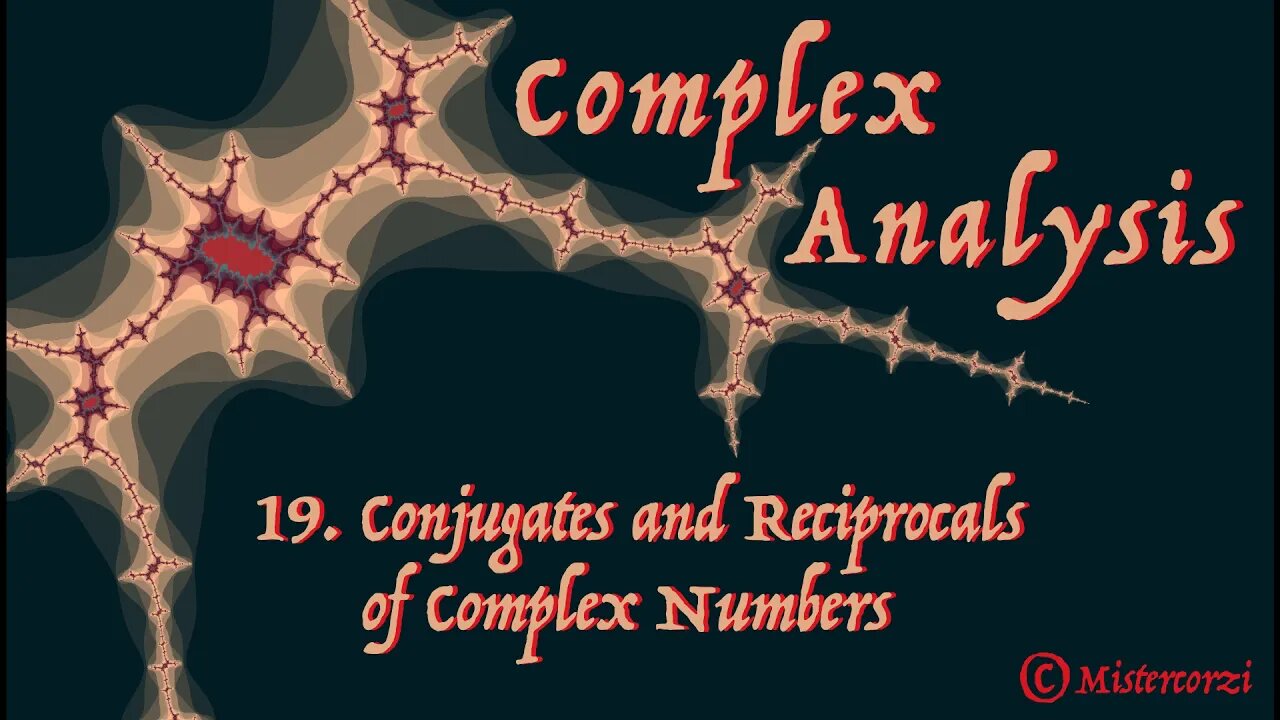Premium Only Content

19 Conjugates and Reciprocals of Complex Numbers
One method of evaluating the reciprocal of a complex number uses its conjugate divided by the square of its modulus. An explanation is given of this method which is then proved. Solutions to these two examples are then worked through:
2. Evaluate: (a) (-2+√2i)^(-1) (b) (-2i)^(-1)
3. If z= 1/(3+i) - 1/(4-2i) express z in the form a+ib.
The viewer is encouraged to attempt these questions before watching the solutions.
The final part of the video explores the visual implications of the main result using a GeoGebra animation of the Argand diagram.
Chapters:
00:00 Proof of the main result (Example 1)
02:56 Further examples (Examples 2 & 3)
03:16 Solution to Example 2a
04:54 Solution to Example 2b
05:38 Solution to Example 3
07:41 Animation of the main result
12:15 Links to the Playlist "Complex Numbers"
Previous videos in this series are:
01 What is a Complex Number?
02 Adding, Subtracting and Multiplying Complex Numbers
03 Dividing Complex Numbers
04 Complex Conjugates
05 The Field of Complex Numbers
06 The Complex Plane
07 The Modulus of a Complex Number
08 Distance on the Complex Plane
09 Properties of the Modulus of a Complex Number
10 Complex Numbers and the Unit Circle
11 The Polar Form of a Complex Number
12 The Principal Argument of a Complex Number
13 The Geometrical Effects of Multiplying by a Complex Number
14 Multiplication of Complex Numbers in Polar Form
15 The Principal Argument when Multiplying Complex Numbers
16 The Geometrical Effects of Dividing by a Complex Number
17 Division of Complex Numbers in Polar Form
18 Properties of the Reciprocal of a Complex Numbers
Key words: modulus, argument, conjugate, reciprocal, principal value, Arg(z), cartesian form.
M337, Open University, Unit A1, complex analysis
-
 22:03
22:03
SantaSurfing
10 hours ago4/21/2025 - Pope is gone! How the world is changing for the good! Trump bring religion back!
23.2K31 -
 1:01:30
1:01:30
Trumpet Daily
18 hours ago $7.70 earnedEurope’s Religious Revival - Trumpet Daily | Apr. 21. 2025
18.8K5 -
 34:52
34:52
Steph & Kayls
14 hours ago $0.99 earnedToys In The Bedroom: Fun, Fantasy, or Too Far? | Ep. 3
7.89K3 -
 2:03:22
2:03:22
Badlands Media
16 hours agoBaseless Conspiracies Ep. 129: Vatican Black Ops, Red Shoes, and the Financial Empire of the Popes
179K49 -
 2:39:38
2:39:38
TimcastIRL
10 hours agoMS-13 Story BURNS Democrats, Media PANICS Tries To Get Off Immigration Story | Timcast IRL
235K926 -
 8:02:19
8:02:19
RalliedLIVE
17 hours ago $10.36 earnedWARZONE WINS ALL DAY w/ RAL
94.4K20 -
 25:49
25:49
Stephen Gardner
12 hours ago🔴Trump Was RIGHT! Newsom’s HUMILIATING Report EXPOSED!
72.2K44 -
 1:36:46
1:36:46
Tucker Carlson
11 hours agoThe Pentagon Didn’t Fire Dan Caldwell Over Leaks. They Fired Him for Opposing War With Iran.
161K230 -
 8:00:01
8:00:01
SpartakusLIVE
12 hours agoGames w/ StoneMountain64 || Duos w/ StevieT into the night
62.3K4 -
 1:34:18
1:34:18
JustPearlyThings
10 hours agoHigh Value Men Are Happy With Wives That Are Mid (Call-in Show) | Pearl Daily
61.4K35